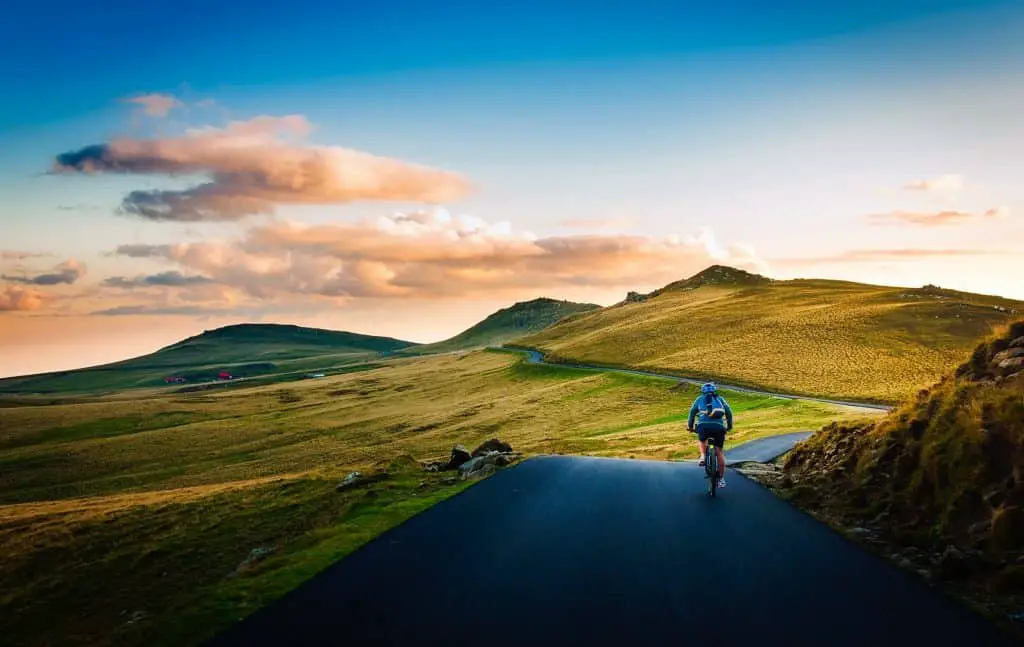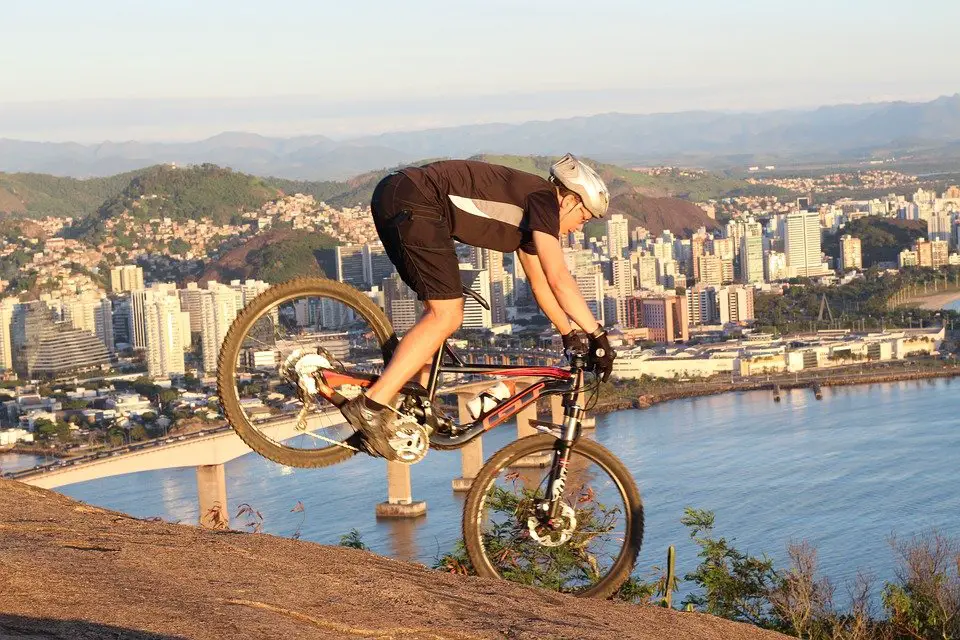Last Updated on February 28, 2022
Mountain biking is a sport for the adventurous. This is why merely riding the bike and heading out to the outdoors just for the sake of exercise along with friends is always never enough.
There will come a time when you will yearn for more. In this case, all-out racing.
In this article, we’ll be diving deep into how a mountain biking race works, the different types of races, and what you can expect from each one.
It is not just about getting the competitive urge, but it’s also about focusing more on physical fitness to achieve the rewards of winning races along with your bike.
Cross-country racing platform

This is the most common type of mountain bike race because it is the simplest to organize. What happens during a cross-country race is that all the participants of the race are positioned before the starting line.
There will then be a timer that will initiate a countdown starting from 10 to number 1, which is then succeeded by a “go.”
That will then be the time when the racers will start to pedal their bikes simultaneously with everyone else. It’s like a marathon, but this time, all the participants are riding on bikes. The first one to reach the finish line is then the winner or the champion.
There are also runner-ups, such as the second, third, and all the way to the top 5 or sometimes even top 10. However, the first, second, and third places are the only ones who are given gold, silver, and bronze medal, respectively.
They are also going to stand on a three-section podium with the champion at the middle and the third placer on the lowest section.
Cross-country tracks vary in distance and style. The most popular type of cross-country racing is XCO or cross-country Olympic. This is also known as a short-track cross country.
Instead of traveling long distances, racers are just going to race around a 4 to 10-kilometer loop XC race track with the number of laps ranging from three to ten or even more.
How do enduro races work?

Enduro racing is just like rally car racing which involves multiple stages with timed downhills. Specifically speaking, a mountain bike enduro race consists of at least three stages with each stage having its own uphill climb and downhill track descent.
The race starts at the top-most part of the mountain just before the downhill race track. All racers are then lined up and are released with a countdown timer on their respective times with a 30-second to a 1-minute gap for releasing time of each rider.
Race timers are then going to track the amount of time it takes for the rider to reach the finish line located at the end of the Stage 1 track.
After that, the rider enters the liaison part of the race where they pedal all the way to the start of the next stage, which is usually found on another elevated area of the mountain. However, they aren’t timed during this liaison segment.
Instead, they are just given a limited amount of time to reach the starting line of the next stage. If not, then their absence time will be deducted from their Stage 2 time which becomes a disadvantage for them.
The average liaison time is usually one hour. Once they reach the top, the same cycle begins. The total race time for all the stages is then added and the one with the shortest time wins.
And just like cross-country races, the winners are the first, second, and third fastest. This can then stretch to the top 5 or top 10, with only the top 3 standing on the podium.
Downhill racing mechanics
Downhill mountain bike racing is very similar to enduro racing because they usually have the same kind of race tracks. However, downhill tracks are more difficult compared to enduro race tracks because they have huge drops and jumps.
They also have more technical sections that can only be tackled smoothly by dual-crown forks that are only present in a downhill mountain bike.
Downhill races also only have one race track, compared to the many tracks found in each of the stages for enduro competitions. Racers are lined up on the starting line and only one rider is released at a specific time.
There is then a 1-minute time gap during the releasing period so racers won’t overtake each other.
Participants can also memorize the track because they can do track reads as much as they want a few days before race day. And just like cross-country races, the first, second, and third fastest times are the winners and they stand on the podium during the awarding ceremony.
What are racing categories?
Every race has its own respective categories so that the participants can be better segregated. This also allows racers to compete more efficiently because they are competing against other mountain bikers who are in their skill level.
The usual top-most category is the Elite or Masters, which is where professional mountain bikers compete.
Then there is the Novice category where competitive high-skill amateurs can join. There are also age categories such as 19 below, 20 to 29, 30 to 39, and 40 above, which are free-for-all categories for participants in their respective age brackets.
Conclusion
Mountain biking is a fun sport because you get to explore the outdoors and go to new places you once thought are unreachable.
However, there will come a time when you’ll feel the urge to go a step higher in the sport and start to compete. That’s where mountain bike racing comes in.
It’s what adds a new meaning to the sport because you get to become your best self when training both physically and mentally.
You also get to new people and go to new places when you’re joining races. Just don’t pressure yourself too much. Have fun, chill, and at the same time, bring out your competitive self so you’ll have more fun in mountain biking.

